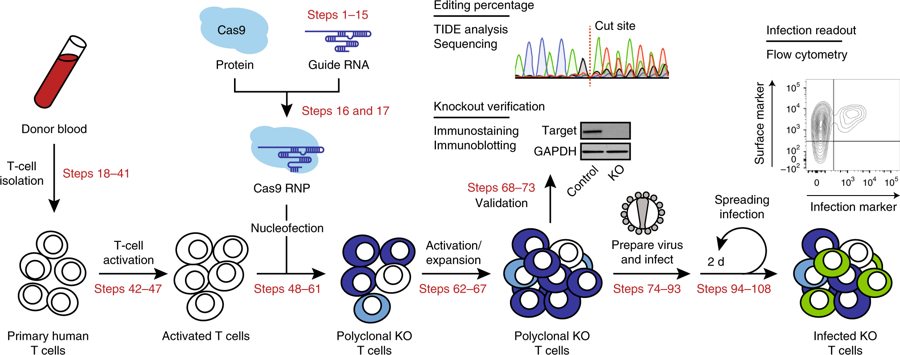CRISPR/Cas9 gene editing strategies have revolutionized our ability to engineer the human genome for robust functional interrogation of complex biological processes. This system has given researchers the unprecedented power to direct permanent genetic changes in experimental cell lines and models.

Because many disease states that we study occur in specialized cellular contexts that are poorly reflected in these models, we, as many other researchers in the field, are turning to primary cells and tissues as laboratory models. Despite the fact that these are often less amenable to genetic manipulation, we recently succeeded in adapting CRISPR/Cas9 technology for the efficient, high-throughput editing of primary CD4+ T cells. Our multiplex platform supports the arrayed generation of hundreds of specific gene manipulations in only a few hours time and is widely adaptable to an array of culturing conditions, protocols, and downstream applications. We’ve recently demonstrated the power of this platform to discover and mechanistically probe host factors critical to HIV replication.
Currently, we’re expanding this approach to explore thousands of manipulations in a single donor, to engineer single point mutations into a directed site, and to edit the genome of other primary tissues. We hope this approach will help pave the way for a better understanding of many different disease states, from HIV infection to cancer, directly in primary patient tissues.
